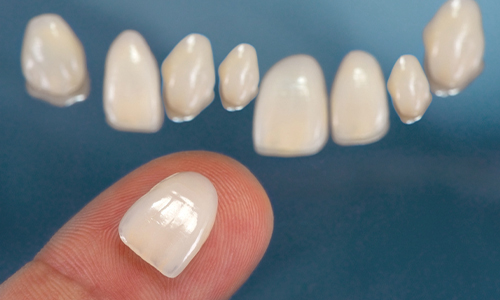A Guide to Veneers: Process, Types, and Cement Used for Placement
Do you want a beautiful, appealing, and long-lasting smile? Also searching about what type of cement is used for Veneers? You might want to consider the veneers treatment with First Point Dental, the best dental clinic in Chicago.
About Veneers
Dental veneers are tooth-colored, thin shells that are permanently bonded onto the front teeth surface to correct minor defects in the smile appearance. Veneers can help with unwanted gaps between the teeth; broken, chipped/cracked, crooked, stained/discolored teeth; or smaller than average teeth. It helps fix the size, form, and shade of the teeth (usually the eight top front teeth), as well as the symmetry of the smile.
Mostly, veneers are composed of porcelain or composite resin materials which require intensive preparation work. These days, even no-prep veneers are applied to the teeth surface through a different process. Veneers are usually designed to be thin, durable, and stain-resistant.
The Process of Veneers Treatment
Usually, the process of placement of teeth veneers is completed in three separate dental visits. First is the initial consultation, then preparation and construction, and finally the placement/application of veneers. The steps involved in the process include:
Initial Consultation- The dentist takes dental X-rays, intra-oral photos, and performs a thorough oral examination to check the patient’s candidacy for the veneer treatment.
Teeth Preparation- Before placing the veneers, the affected teeth must be prepped. In the case of indirect composite veneers, we thoroughly clean the surface of the teeth, acid-etched for a few seconds, and finally rinsed with clear water.
To apply the traditional veneers and allow for their proper placement, some portion of the tooth enamel must be removed beforehand. This is an irreversible process that can be painful, which is why an anesthetic would be used to numb the area around the teeth being treated.
Preparation/Construction of Veneers- Once the teeth are prepared to receive veneers, the dentist takes a putty impression of the prepared teeth for mold creation. Next, a shade guide is used to choose the right color for the veneer material which matches the shade of the adjacent natural teeth. Next, the dental impression and the required shade are sent to a dental laboratory to make the permanent porcelain veneers. Till then, the restoration of wear of the teeth is made possible by the dentists by creating and placing chairside temporary veneers which last for a few weeks. Dentists might use Computer-aided design and manufacturing technology to design the permanent designs.
Placement of Final Veneers- In the next dental visit, once the permanent veneers are ready, the dentist adjusts and fits the veneers. After successful placement, the bite of the patient is checked. Once adjusted, the veneers are permanently bonded to the front teeth surface using cementing material which is photo-polymerized to strongly adhere to the teeth. Any excess cement is cleaned off.
Most Common Types of Veneers

Porcelain Veneers- These are the most preferred option as they are thinnest, extremely durable and last for more than 15 years with proper care and are more natural-looking than the other types. Once the permanent veneer is ready, it is placed on the shaved down tooth and cemented in place.
Composite Resin Veneers (Bonded Veneers)- These are the affordable alternative to porcelain veneers. These are resistant to teeth whitening, needless grinding down of the teeth, or sometimes no enamel removal at all. However, they have a lifespan of about 5 years. During the treatment, a thin layer of composite resin is directly applied to the etched tooth surface. To achieve the intended look, more layers of composite resin material must be subsequently added. Lastly, the composite material is strongly attached to the tooth surface by curing or hardening the material with a special light source like LED.
Which Cement is Used for Securing Veneers Inside the Mouth?
Cementation of veneers is a crucial step in the placement of veneers. The effectiveness of high-end aesthetic bonded dental restorations can be attributed to their intimate adhesion to the healthy remaining mouth structures and their bond strength. This way, the tooth can get back most of its original strength. When working additively, this effect can be enhanced.
Generally, it’s recommended to cement the veneers with light-cured, total-etch cosmetic resin material instead of the self-adhesive resin cement. Self-adhesive resin cement is not advised as it slightly changes color over-time, which affects the aesthetics of the treatment. Furthermore, they are associated with limited working time.
In contrast, the total-etch resin cement provides extra bond strength between the veneer and the teeth surface. Since the preparation of the veneers is often associated with little retention form, a better cementing material like light-cured aesthetic resin is necessary to increase the longevity of the veneers.
To know more about veneer costs and the cement used in veneers in detail, schedule an appointment now with the dental experts at First Point Dental.

